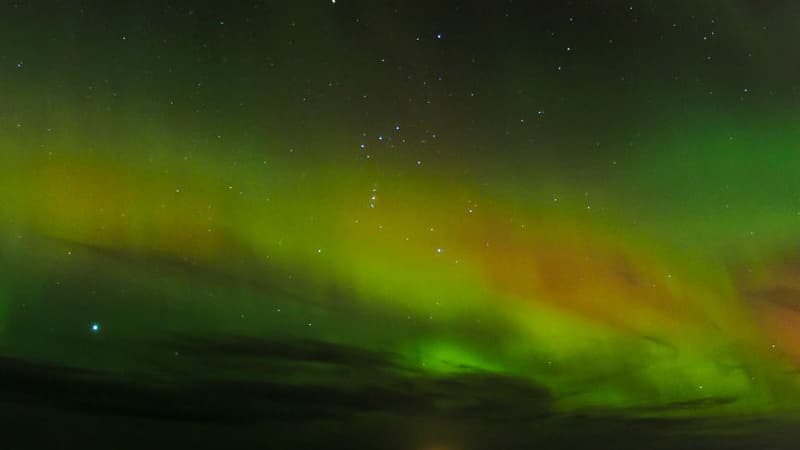Northern lights enthusiasts will not need to go to the Far North to observe the phenomenon, which already occurred extremely rarely in the northern half of France on Sunday night and could repeat itself this Monday night.
The spectacle, which illuminates the night with huge colored curtains, is common in latitudes beyond the polar, arctic and antarctic circles.
Caused by solar flares, the Northern Lights are rarer at lower latitudes, such as in France, where they can be observed about every ten years, provided the solar flare is strong enough and pointed in the right direction. Countries in the Far North record up to several hundred per year.
In France, amateur and professional astronomers were on the prowl late Sunday, following the announcement of a solar flare on Friday. These flares are the result of the intense magnetic activity that reigns at the star’s equator.
“I had been monitoring for a few days the arrival of a solar flare that was going to impact the Earth,” testified Sylvain Wallart, an amateur photographer who captured this spectacle in the sky over northern France. “I went out around 10:45 p.m. and took a picture and got a Northern Lights.”
“A very rare and magnificent phenomenon”
An aurora borealis appears when jets of hot magnetic particles, generated by these solar flares, reach Earth’s environment. Streams of ionized particles projected at colossal speeds then strike Earth’s magnetic field, which serves as a shield protecting the planet.
“These charged particles will excite the particles in the atmosphere, in particular oxygen and nitrogen, which will respectively give the green and pink” of an aurora borealis, explains Éric Lagadec, an astronomer at the Observatoire de la Côte d’Azur (south of France). ).
The result is a night show that can last for hours. It attracts a large number of tourists from the northern latitudes, from the northern United States and Canada to the Scandinavian countries via Iceland.
Light from the Sun takes just eight minutes to reach Earth, but the flow of ionized particles associated with an eruption takes two days to travel the 150 million km. The solar flare that occurred on Friday caused the auroras seen on Sunday night. Another eruption, which occurred on Saturday, could cause new auroras on Monday night.
“Look at the sky (Monday night). At worst, you’ll see stars, and at best, a very rare and magnificent phenomenon,” advises Éric Lagadec.
Source: BFM TV


